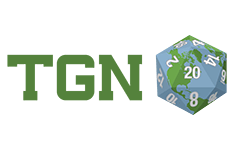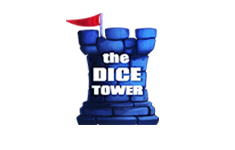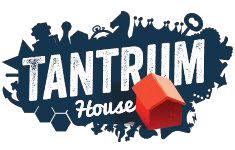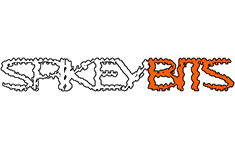In this developer diary we will answer some questions related to the development of Fantasy Commander, as well as talk about how exactly the various game elements and mechanics were created.
- What prompted the idea to create it?
- Why such a style?
- Why such a name for the project?
- How did you come up with the idea of orders and the basic mechanics of the game?
- How was the fatigue parameter invented and why does it work the way it does?
- Tell you about the existence of scenarios that allow you to determine the initial formation of troops and terrain.
- How exciting PvP battles can be, and whether the rules for tactics solve a lot of things?
What prompted the idea to create it?

So Fantasy Commander is first and foremost a strategy in a completely different format. It’s not individual soldiers that are fighting here, but whole armies.
Although we have kept heroes and colossal creatures as separate units. But this is an exception and a tribute to the genre.
In terms of gameplay, Fantasy Commander plays and feels completely different from Legends of Signum. We’ve implemented a mechanism for the warlord player to plan and give orders to his units. Just as it might happen on a real battlefield. Yes, things can go wrong and the orders given in advance will have to be adjusted. But that’s the skill of the strategist and the art of war.
Why such a style?
The style of the project is dictated by the theme we are most passionate about. It’s fantasy with grimdark elements! Actually, we want more grimdark (laughs!) and it will most likely show up more in the future.
We like swords, armour and magic. A bit more technology and where can we go without the influence of darkness – decay, necromancy and the profane.
So we are absolute fans of swords and magic, so we do what we want and how we want.
Why such a name for the project?
When choosing a name for the project, we went for the simplest and most intuitive way. Fantasy Commander is a game about battling armies in a fantasy world. So it’s simple – a commander of a fantasy army.
How did you come up with the idea of orders and the basic mechanics of the game?
We spent a long time thinking about how to represent the mechanism of commanding an army. That is, a commander on the battlefield can’t personally be in all areas at the same time, let alone personally tell each soldier what to do and when to do it. Before the battle, a general battle plan is drawn up, and orders are always given to each unit.
In Fantasy Commander, there is a command phase during which the player receives Order Tokens and secretly distributes them to his units. This is how the player plans the future battle and decides which unit will act when.
This is one of the key moments in the game. Here you have the opportunity to outsmart your opponent before the battle has even begun. We really like this mechanic. While it may seem unfamiliar to many wargame players, it only takes two or three games to get the hang of receiving and giving orders to your units.
How was the fatigue parameter invented and why does it work the way it does?

And so it is with us in Fantasy Commander, the “Endurance” parameter is the reserve of strength of this or that troop (yes, dead men and mechanisms are often deprived of this parameter!) The player can force his soldiers to attack the enemy after an exhausting run, but this will very quickly lead to the exhaustion of the troop’s strength and thus to a partial loss of its fighting ability.
Another way to use endurance is to use it instead of taking damage. As long as the squad is full of energy, it can turn real losses into a fatigue token. We think this is a great game mechanism that shows how having fresh energy affects damage and the battlefield environment. Once a unit is exhausted, it becomes an easy target for the enemy and is often killed in the next turn.
So our advice to you is to take care of your warriors’ strength and it will bring you victory.
Tell you about the existence of scenarios that allow you to determine the initial formation of troops and terrain.

In the future, as you try out the suggested troop composition, you will be able to change your army roster and battle deck. You don’t have to use units from the Styx or Iron Nest armies to play the basic scenario. For example, it will be interesting to try out the Orc Horde against the Empire or Undead using one of the base scenarios.
I would also like to say a few words about the scenarios themselves. Each map is a specific plot. You can find a classic battle in the environment, an attack on the vanguard of the army, crossing the river, and so on. Players will have to solve a variety of strategic problems. You can try yourself as an attacker or a defender.
How exciting PvP battles can be, and whether the rules for tactics solve a lot of things?
Although we have elaborated the Solo mode, where you can fight battles using the basic rules and develop your city between missions, we recommend that you start with the PvP mode.
Only here will you be able to hone your skills as a strategist by carefully planning your next move and allocating order tokens to your troops. Orders have different colours: red, blue and green (there are yellow orders in the game, but they are given to units that are in reserve or need rest). This colour gradation is necessary to indicate the turn in which your troops will be activated.
Conventionally, the colours of the orders correspond to the three main phases of combat. Where red orders are the start of the battle, instant rush attacks. Red orders are usually given to the fastest and deadliest units. In the middle of the battle, when the tried-and-tested ranks of the legionaries come into action, blue orders are used. And the final phase of the battle, when units need support, is indicated by green orders.
The game provides for the possibility of an immediate response by a squad to a threat. If your troop is attacked by an enemy, you can replace your Order token with a Defence token. This allows your troop to counterattack. By doing this, your unit loses the ability to activate later, but gains the ability to defend until the end of the turn. This rule allows you to simulate on the field a situation that often occurs on the real battlefield, when a unit loses the initiative and has to react to a threat against orders received earlier.
I hope that we have not bored you too much with our mechanics and that you will find the game easy and intuitive once you have learnt all the basic rules.












